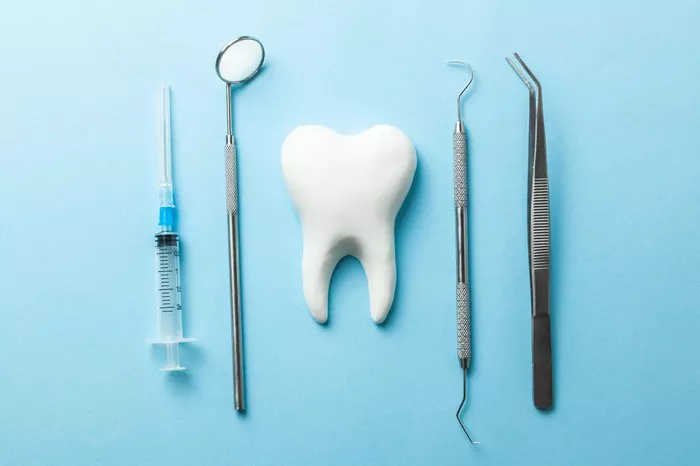Understanding private dental insurance is crucial for effectively managing your oral health expenses. This article provides an in-depth look at how private dental insurance operates, including its structure, benefits, and limitations. By exploring the various types of plans, coverage options, and key considerations for choosing a plan, you’ll gain a clearer understanding of how to navigate your dental insurance choices. Whether you’re new to dental insurance or seeking to optimize your current coverage, this guide offers valuable insights to help you make informed decisions about your dental health needs.
Overview of Private Dental Insurance
Private dental insurance is designed to help cover the costs associated with dental care. Unlike public or government-funded dental programs, private dental insurance is offered by private companies and typically involves a monthly premium paid by the insured. This insurance helps mitigate the financial burden of dental treatments, ranging from routine check-ups to more complex procedures.
Types of Private Dental Insurance Plans
There are several types of private dental insurance plans available, each with its own structure and benefits. Understanding these can help individuals choose a plan that best suits their needs.
1. Indemnity Plans
Indemnity plans, also known as fee-for-service plans, offer the most flexibility in choosing dental providers. Under this plan, the insured can visit any dentist, and the insurance company will reimburse a portion of the cost based on a fee schedule.
Benefits
Greater freedom in choosing dental care providers
Reimbursement for a wide range of dental procedures
Limitations
Higher premiums compared to other plans
Patients may need to pay upfront and seek reimbursement
2. Preferred Provider Organization (PPO) Plans
PPO plans offer a network of preferred providers with whom the insurance company has negotiated rates. Patients receive higher benefits when they choose dentists within this network.
Benefits
Lower out-of-pocket costs when using in-network providers
No need for referrals to see specialists
Limitations
Higher costs if choosing out-of-network providers
Limited coverage for procedures not performed by network dentists
3. Health Maintenance Organization (HMO) Plans
HMO plans require patients to select a primary care dentist from a network. Referrals from the primary dentist are necessary to see specialists.
Benefits
Lower premiums and out-of-pocket costs
Coordinated care through a primary dentist
Limitations
Limited choice of dentists
Need for referrals to see specialists
Coverage and Benefits
Dental insurance plans vary in terms of coverage and benefits. Here is a general overview of what private dental insurance plans typically cover:
1. Preventive Care
Preventive care includes routine services aimed at maintaining oral health and preventing dental issues. Common preventive services covered by dental insurance include:
Routine Check-ups: Regular dental visits to monitor oral health and detect issues early.
Cleanings: Professional cleanings to remove plaque and tartar buildup.
X-rays: Diagnostic imaging to identify potential problems not visible during a visual exam.
2. Basic Procedures
Basic procedures address common dental issues and may include:
Fillings: Restorative treatment for cavities.
Extractions: Removal of decayed or damaged teeth.
Root Canals: Treatment for infections in the tooth’s root.
3. Major Procedures
Major procedures involve more extensive treatments and often have higher costs. Coverage for major procedures may include:
Crowns: Caps placed over damaged or decayed teeth to restore their function and appearance.
Bridges: Prosthetic devices used to replace missing teeth.
Dentures: Removable replacements for missing teeth.
Understanding Coverage Limits
Dental insurance plans often have coverage limits, which can affect how much the insurance will pay for specific procedures. Common limits include:
Annual Maximums: The maximum amount the insurance will pay for dental services within a year.
Deductibles: The amount the insured must pay out-of-pocket before the insurance begins to cover costs.
Co-payments and Coinsurance: The portion of the cost the insured is responsible for after the deductible is met.
Pre-Authorization and Claims Process
The process for obtaining coverage and reimbursement typically involves several steps:
1. Pre-Authorization
Some insurance plans require pre-authorization for certain procedures. This involves submitting a treatment plan to the insurance company for approval before the procedure is performed. Pre-authorization helps ensure that the treatment will be covered and prevents unexpected out-of-pocket expenses.
2. Claims Submission
After receiving dental care, the insured or dental office will submit a claim to the insurance company. The claim includes details about the procedure and the associated costs. The insurance company then reviews the claim and determines the amount to be reimbursed.
3. Reimbursement
Reimbursement is the process by which the insurance company pays the dental office or the insured for covered services. The amount reimbursed depends on the specifics of the insurance plan and the treatment received.
See Also: What Type of Dental Insurance Is the Best?
Choosing the Right Plan
Selecting the right dental insurance plan involves a careful evaluation of various factors to ensure that the plan meets your specific needs and preferences. Here’s a detailed guide to help you make an informed decision:
1. Assess Your Needs
Begin by assessing your current dental health and anticipating any future needs. Think about the following:
Current Dental Health: Consider any ongoing dental issues you have, such as cavities, gum disease, or orthodontic needs. If you have existing conditions that require frequent treatment, you may need a plan with comprehensive coverage.
Anticipated Procedures: Evaluate any potential dental procedures you might need in the future. This could include major treatments like crowns, bridges, or dentures. If you anticipate needing extensive work, choose a plan with higher coverage limits for major procedures.
Family Needs: If you are looking for coverage for your family, consider the dental health needs of all family members. Children might need orthodontic care, while adults may require more preventive and restorative services.
By understanding your current and anticipated dental needs, you can better choose a plan that provides appropriate coverage and benefits.
2. Compare Plans
Once you have a clear understanding of your needs, compare different dental insurance plans to find one that fits your requirements. Key aspects to compare include:
Premiums: The monthly cost of the insurance plan. Consider how the premium fits into your budget and whether it is affordable given your financial situation.
Deductibles: The amount you must pay out-of-pocket before the insurance company starts covering costs. Lower deductibles might be preferable if you expect to need frequent care.
Coverage Limits: The maximum amount the insurance will pay for dental services in a given period, typically annually. Plans with higher coverage limits may be more suitable if you anticipate significant dental expenses.
Co-payments and Coinsurance: The portion of the cost you are responsible for after meeting your deductible. Check if the co-payments and coinsurance rates are manageable and align with your budget.
Coverage for Specific Procedures: Ensure that the plan covers the types of dental procedures you are likely to need, including preventive, basic, and major services. Some plans may have exclusions or limitations on certain treatments.
Annual Maximums: The total amount the insurance will pay per year. Plans with higher annual maximums can offer better coverage for extensive treatments.
Comparing these factors will help you identify a plan that balances affordability with adequate coverage.
3. Review Provider Networks
Many dental insurance plans operate within a network of preferred providers. When reviewing plans, consider the following:
Preferred Providers: Check if your current dentist or any specialists you prefer are included in the plan’s network. Staying within the network typically results in lower out-of-pocket costs.
Flexibility: Some plans allow you to see out-of-network providers, but this might come with higher costs. If you prefer the freedom to choose any dentist, ensure that the plan offers reasonable out-of-network coverage.
Quality of Providers: Research the quality and reputation of the providers in the network. Look for reviews or ratings to ensure that the network includes reputable and skilled dental professionals.
Choosing a plan with a network that includes your preferred providers or offers flexibility can help reduce costs and ensure you receive quality care.
Conclusion
Private dental insurance plays a crucial role in managing the costs of dental care. By understanding how private dental insurance works, including the types of plans available, coverage options, and the claims process, individuals can make informed decisions about their dental health insurance. Whether you choose an indemnity plan, PPO plan, or HMO plan, selecting the right dental insurance can help ensure that you receive the care you need while minimizing out-of-pocket expenses.






















